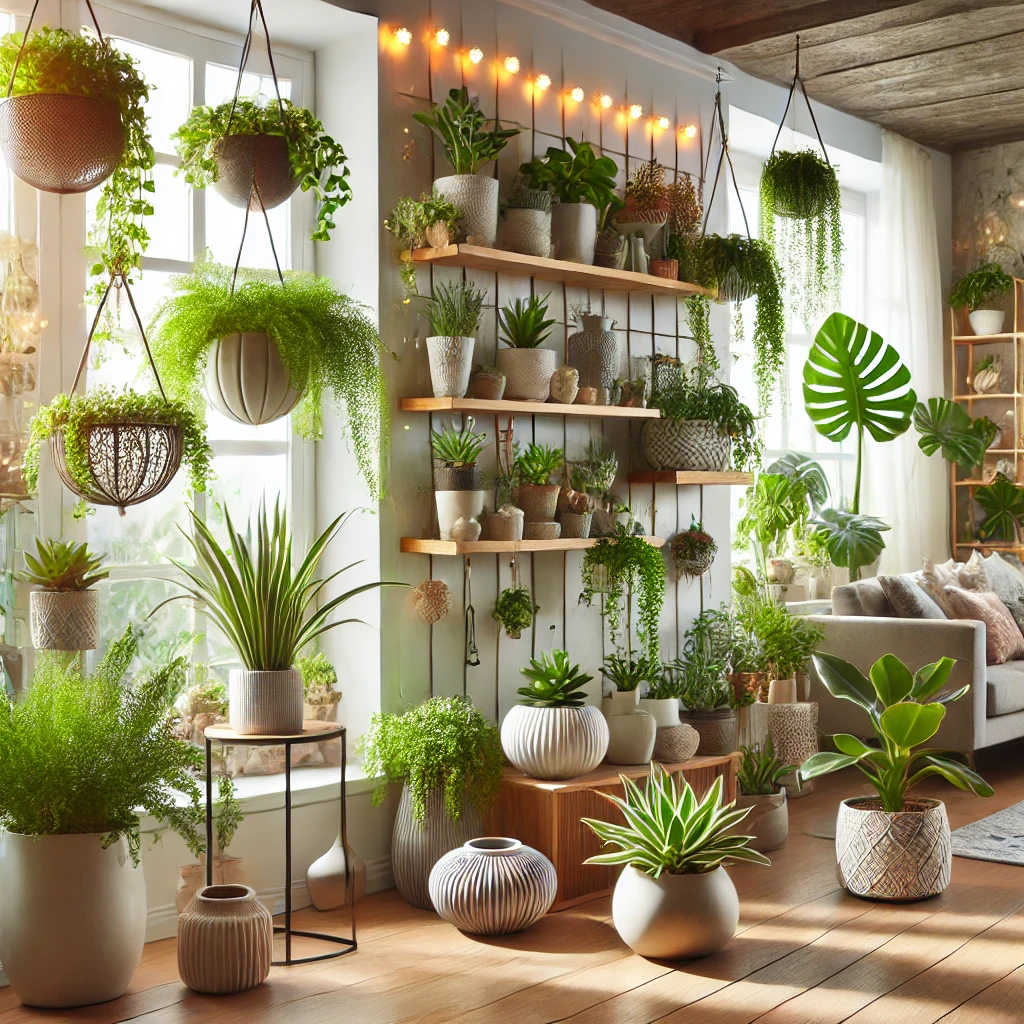Choosing the Right Space for Your Indoor Garden
The first step in creating an indoor garden design is figuring out the ideal location for your house. Given that most plants require sunlight to flourish, the space you select should have access to natural light. If your space isn’t exposed to direct sunlight, think about low-light plants like peace lilies, ferns, and snake plants. If you’re short on floor space, vertical gardening is a great solution because it allows you to grow plants in small spaces by using walls or shelves. Furthermore, make sure the area is away from air conditioners or heaters because abrupt temperature changes can damage plants. The idea is to improve the overall appearance of your house while fostering a cozy and well-balanced atmosphere that will encourage plant growth.
Selecting the Best Plants for Your Indoor Garden
Selecting the appropriate plants is crucial for your indoor garden to succeed. Start by evaluating the lighting, humidity, and space that you have available in your area. Consider growing herbs like basil, mint, or rosemary if you have lots of sunlight. These plants not only add color but are also useful in the kitchen. Plants that don’t need much sunlight, like pothos, philodendrons, or ZZ plants, can add beauty to low-light areas. Cacti and succulents are also great choices for people who want low-maintenance plants. Mix different plant types with varying sizes, colors, and textures to create a visually appealing and diverse indoor garden. This will maintain the atmosphere lively and fresh while also contributing to a more dynamic appearance.
Incorporating Decorative Elements into Your Indoor Garden
If you want your indoor garden to really stand out, think about adding accent pieces that go well with the plants and the interior décor of your house. Chic pots, planters, and plant stands can showcase your individual style and give your indoor garden personality. For a more minimalist appearance, go with sleek, contemporary designs; alternatively, choose rustic, natural containers for an organic vibe. You can add more creativity with wall-mounted shelves, hanging planters, and terrariums—especially if you’re tight on space. Decorative stones, fairy lights, or little sculptures can all be added to your indoor garden to improve its visual appeal and turn it into a lovely focal point for your house.
Caring for Your Indoor Garden to Ensure Long-Term Success
Regular care is necessary for maintaining an indoor garden, but with the right attention, your plants will flourish for many years. To begin with, make sure every plant gets the right amount of water according to its requirements. Overwatering is a common error that causes root rot. Using the proper soil is also crucial, particularly for certain plants like ferns and succulents that have particular needs when it comes to soil. Keep an eye out for any indications of pests or illnesses in your plants, and take quick action to address any problems you find. Furthermore, turning your plants every now and then guarantees uniform growth by exposing all sides to sunlight. If you give your plants the proper attention, you can have a gorgeous, lush indoor garden that keeps growing.
